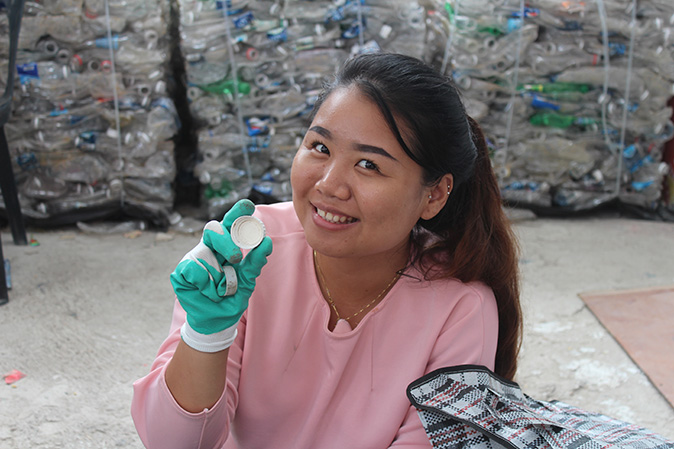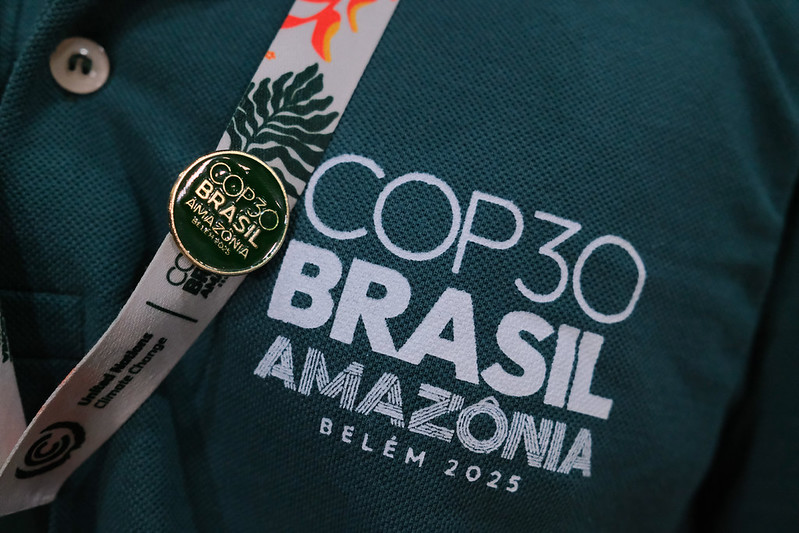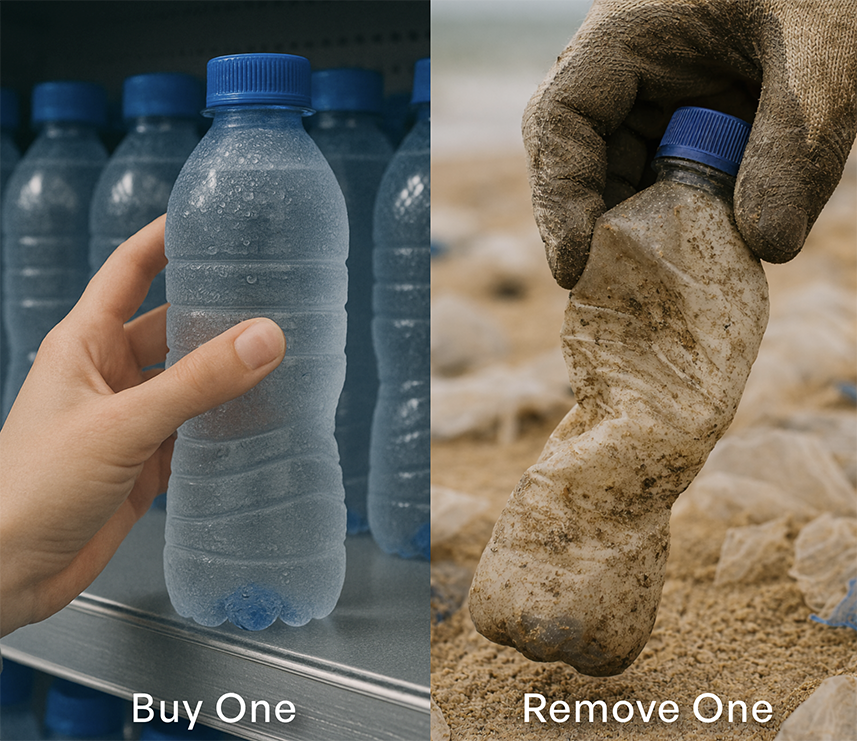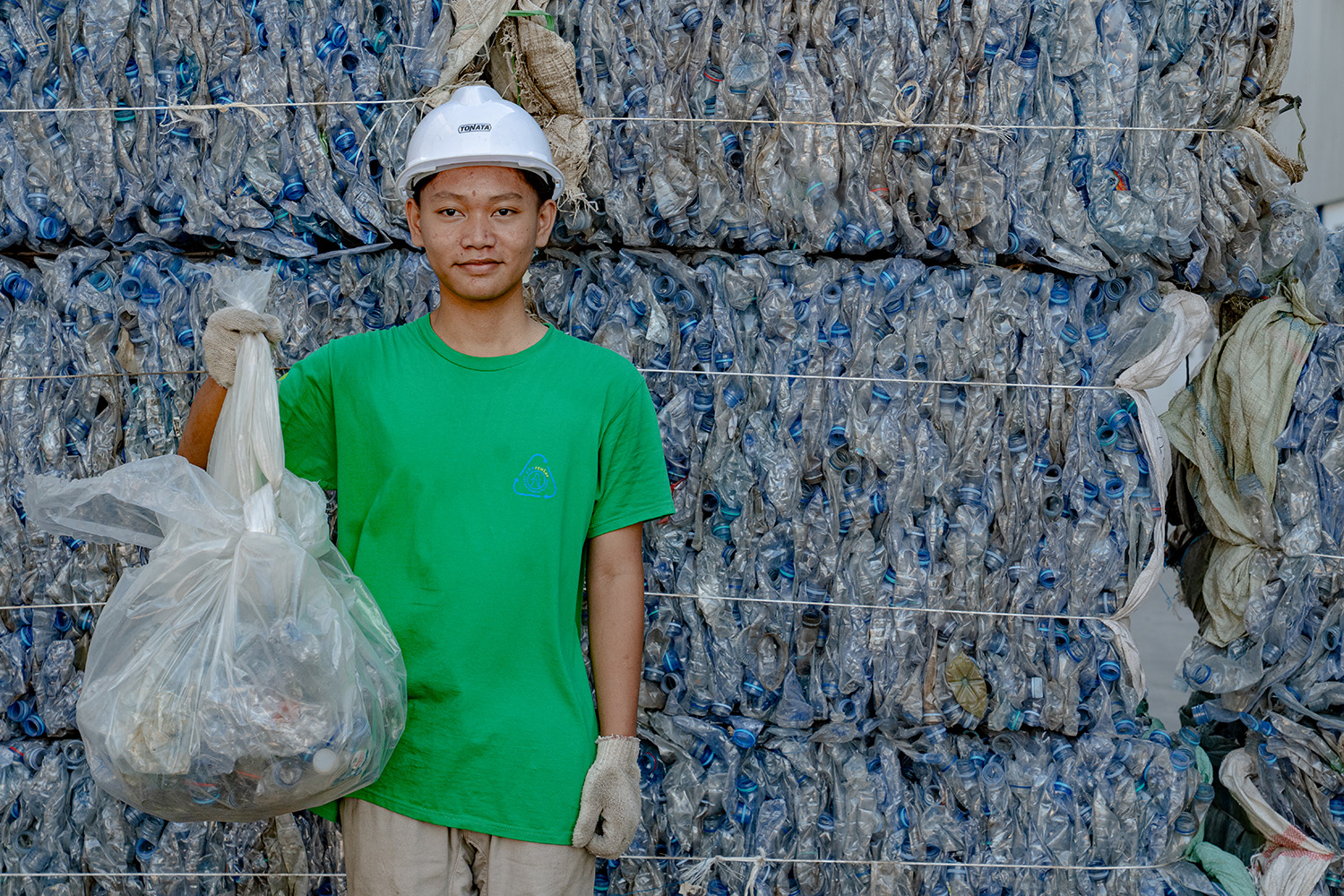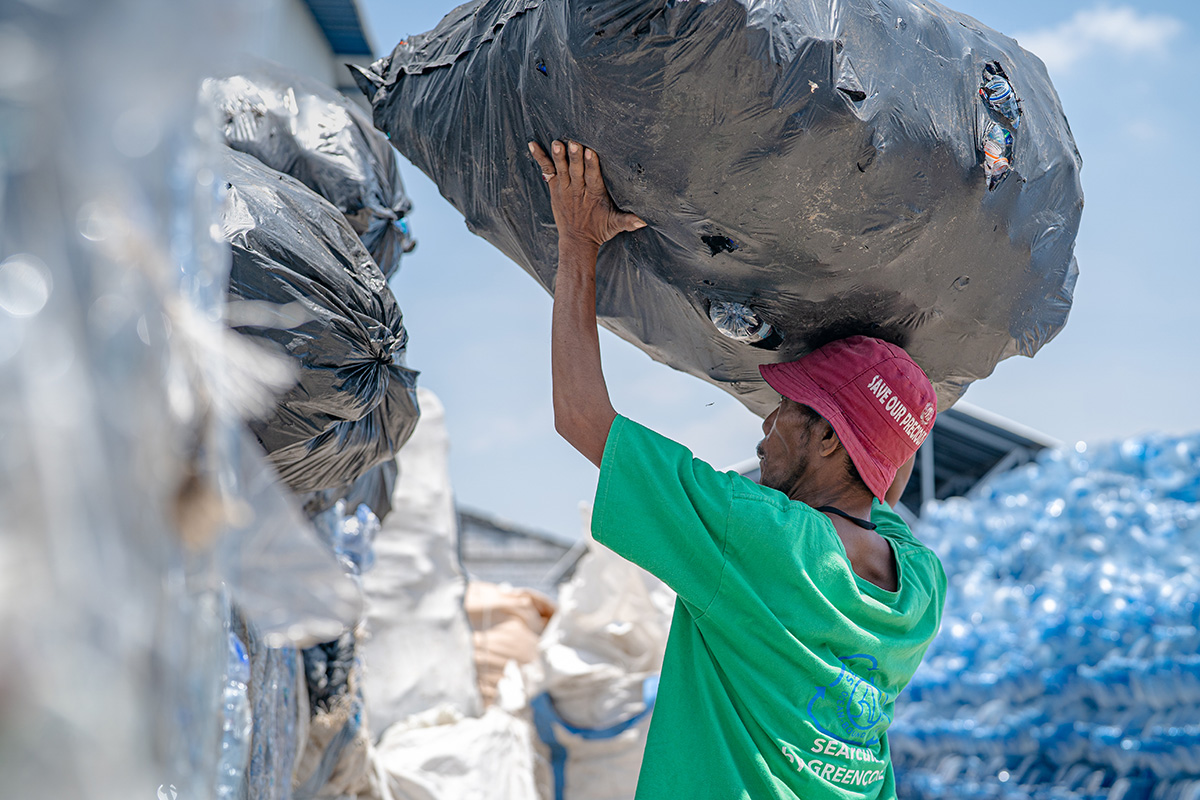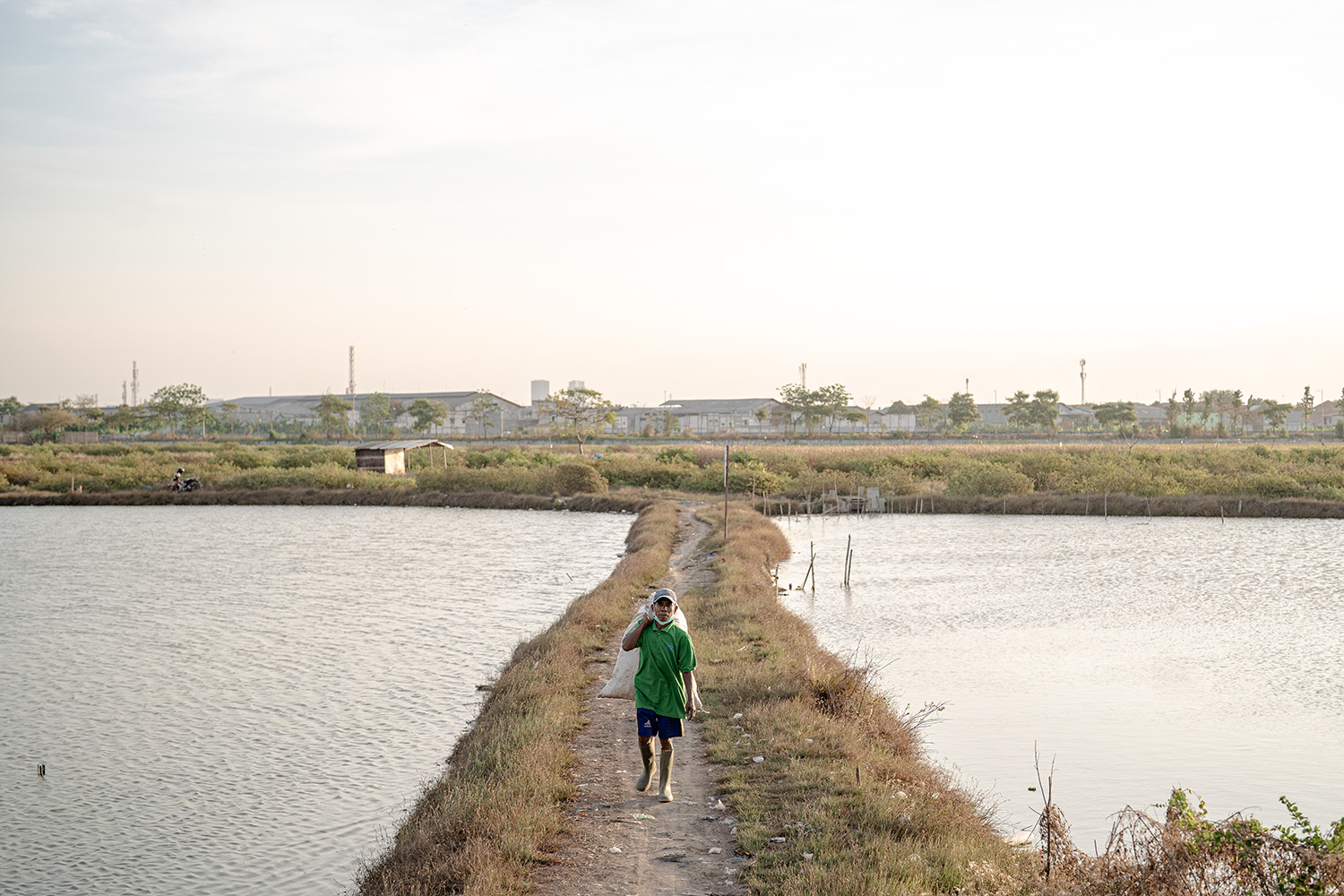Plastic Credits are a mechanism to incentivise the removal of plastic from the environment and the recycling of plastic into new products and packaging.
There are two key participants in plastic credits. One is companies who use plastic in their products and packaging. The other is Projects that collect plastic from the environment and or recycle plastic that is collected.
These two parties work together as follows. A Company wishes to take responsibility for the plastic they put into the environment by removing a similar amount of plastic from the environment. They decide plastic credits are the best way to do this (see Other Options).
First step is for the company to calculate how much plastic they put into the environment each year, which is called their Plastic Footprint. The company then purchases a volume of plastic credits that matches their plastic footprint, i.e. 1 plastic credit equals 1 tonne of plastic footprint. So if a company has a plastic footprint of 10,000 kg, they purchase 10,000 plastic credits.
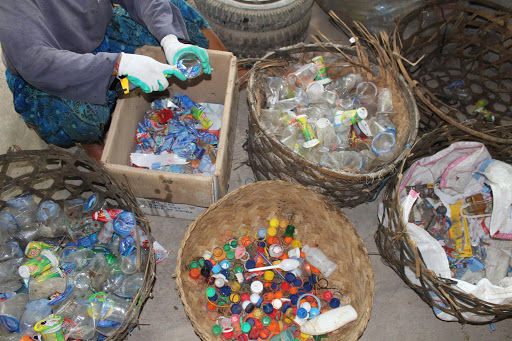
Figure 1. One Plastic Credit is equal to 1kg of plastic. When a company purchases the same amount of Plastic Credits to their plastic footprint, they essentially become plastic neutral.
The money that the company pays for the plastic credits is given to a project. In return for being given this money, the project is obliged to collect and or recycle a volume in kilograms of plastic equivalent to the company’s plastic footprint.
As a consequence of the transaction between a company and a project, benefits are created for both parties. For the company, they are able to claim they’ve taken responsibility for the plastic they put into the environment, i.e. Company X is now Plastic Neutral (see other claims). For the project, they are able to source funding to support the collection and recycling of plastic in a sustainable way, which would not have otherwise been possible had it not been for the funding.
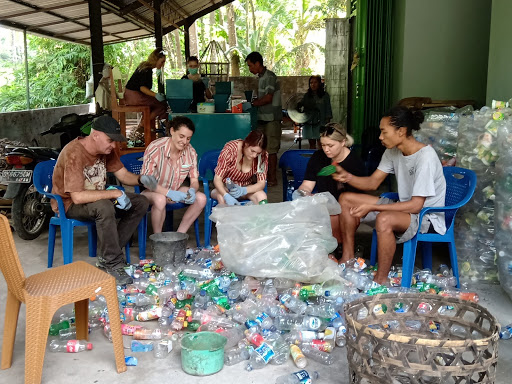
Figure 2. Les Village Project collecting and sorting discarded plastic, equivalent to a company’s plastic footprint.
Most Asked Questions
Does the company have to collect 100% of the plastic they have put into the environment?
No: It’s for the company to decide the proportion of their plastic footprint they wish to collect from the environment. Some companies may have a very large plastic footprint and may decide to address a portion of their plastic footprint initially and 100% eventually.
Some may even decide to go further and collect more than their plastic footprint. This is commonly referred to as being plastic positive. For example Coca-Cola has a published ambition to collect twice as much plastic as they put into the environment.
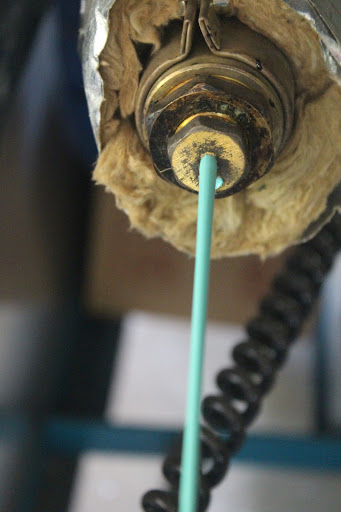
Figure 3. Collected plastic can be processed into profitable filament or products, for recycling in the economy.
Are plastic credits like carbon credits?
Yes: They are very similar as the plastic credit system was developed from the carbon credit systems that have been used for the last 20-years and last year generated 212 billion dollars of funding for carbon reduction programs around the world.
In fact the secretariat of the new plastic credit system, an organisation called Verra.org, was responsible for the development and maintenance of the Verified Carbon System which is one of the most widely used carbon credit systems in the world today.
Are plastic credits only encouraging plastic to be collected from the environment?
No: The above examples talk about collection of plastic from the environment (to simplify the initial conversation), however plastic credits differ from carbon credits in that there are two plastic credit types where in carbon credits there is only one.
The first credit is a collection credit which is created when plastic is removed from the environment and it is certain not to go back into the environment. The second credit is a recycling credit which is created when a plastic is recycled and it’s certain to displace the production of Virgin plastic.
It is very possible that a single piece of plastic if both collected and recycled could give rise to two credits.
So can anyone collecting and or recycling plastic sell plastic credits?
Yes and no.
Yes: Anyone can sell plastic credits in an unregulated manner. These types of credits come with additional risk relating to the certainty of the projects meeting their obligations, for example collecting the requisite amount of material, using ethical labour and working conditions common amongst other things.
No: not anyone can sell plastic credits under the Plastic Standards as regulated by Verra.org. Underlying the Plastic Standards is a vast library of documents and guidelines that projects must adhere to in order to sell plastic credits. We won’t go into the details of these documents now, but you can read more here.
However, there are a few key guidelines that we will touch upon. These are baseline and additionality. Baseline is a concept that requires a project to identify what was happening with plastic collection and recycling in their vicinity prior to the project starting. Additionality is a concept that requires the project to prove that they are collecting and or recycling plastic which is in addition to the baseline, in order for them to sell plastic credits. Once this is established, the project can only sell plastic credits from activities that are in addition to the baseline. These two Concepts work in tandem with one another and are identical to the guidelines in carbon credits.
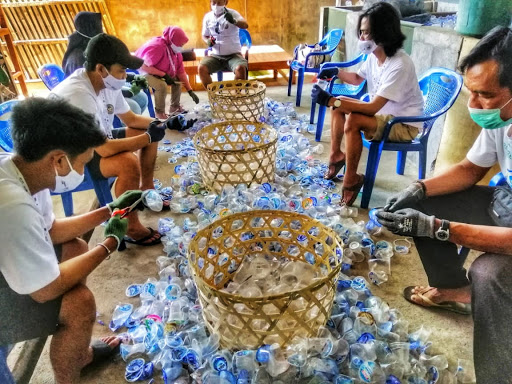
Figure 4. Sea Communities Project in Les Village collecting and sorting plastic as an approved project for Plastic Credits.
For a project to start selling plastic credits, they must go through a registration process. Once this process is complete they are certified and added to a registry so they can then start selling plastic credit in accordance with the regulations. Once the projects start selling credits, they are also obliged to monitor their activities and report against their performance on an ongoing basis in order to continue selling plastic credits. Third party auditors will visit the projects from time to time to check that the project is in fact operating as they have reported.
How can a company be sure a project delivers obligations?
A critical piece to the integrity of the plastic credit system is the confidence of buyers of credits in the project delivering their obligations. For this reason the projects must go through this rigorous program to register their activities and monitor and report against them on an ongoing basis in accordance with the comprehensive set of regulations as designed and maintained by Verra.org.
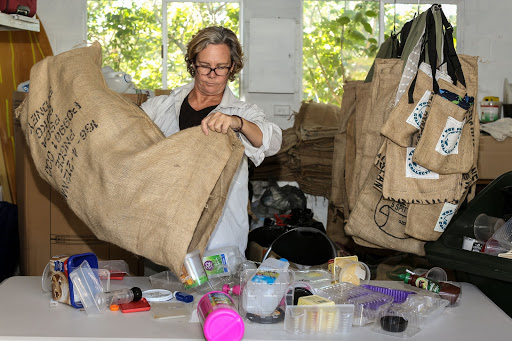
Plastic Credits and Claims
In February 2021, the 3R Initiative released Guidelines for Corporate Plastic Stewardship (the “Guidelines”). The Guidelines outline strategies for corporates to achieve plastic leadership commitments. On achieving leadership commitments, corporates may communicate one of the three claims identified in the Guidance – Net Zero Plastic Leakage, Net 100% Recycled at End-of-Life, and Net Circular Plastic – or may communicate another leadership claim, such as Plastic Neutral, provided specific elements are disclosed (more on this later). Companies may apply the Guidelines at a company, brand, market or product level.
What do the claims mean?
Let’s take a closer look at three claims identified in the Guidance as might apply to a brand. Net Zero Plastic Leakage implies that all plastic put into the market by the brand is collected. Net 100% Recycled at End-of-Life implies that all plastic put into the market by the brand is collected and recycled. And finally Net Circular Plastic implies that all plastic put into the market by the brand is collected and recycled, and the brand uses 100% recycled content.
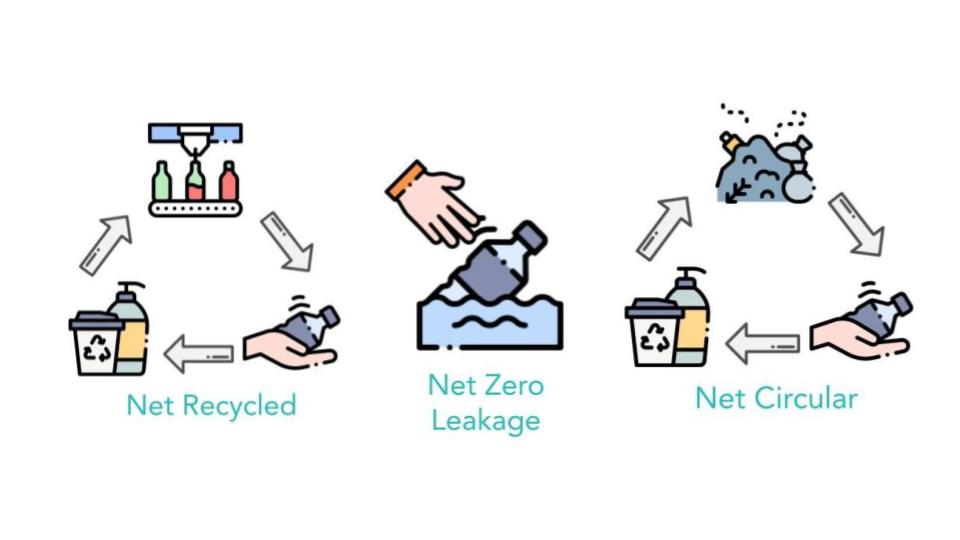
To illustrate, let’s assume a cosmetics brand sells face moisturizer in plastic containers. One years’ sales of the face moisturizer uses 10 tonnes of plastic in the containers. If the brand wishes to claim the face moisturizer as Net Zero Plastic Leakage that year, it must demonstrate collection of 10 tonnes of plastic. If the brand wishes to claim Net 100% Recycled at End-of-Life, it must demonstrate collection of 10 tonnes of plastic AND recycling of 10 tonnes of plastic. Finally if the brand wishes to claim Net Circular Plastic it must demonstrate collection of 10 tonnes of plastic, recycling of 10 tonnes of plastic AND must use 100% recycled content in the plastic containers themselves.
How might a brand demonstrate collection and recycling of plastic, and use of 100% recycled content?
Let’s look first at collection and recycling activities. Coming back to our moisturizer brand example, there are different ways a brand might go about demonstrating collection and recycling of the 10 tonnes of plastic. Specifically, the Guidelines distinguish between actions a brand takes within its own value chain versus beyond its own value chain.
Within its own value chain the brand may operate a return it / reuse scheme. Where internal activities don’t account for all of the brand’s plastic output, the brand may invest beyond its own value chain such as by purchasing a project’s plastic credits.
When it comes to demonstrating use of 100% recycled content, in our example, the brand will need to either use recycled plastic in its moisturizer containers or purchase recycled material credits.
Each brand today will be at a different stage in its plastic stewardship journey and correspondingly will use plastic credits to a different extent. Regardless of a brand’s starting point, it should identify a strategy to reduce its plastic footprint and increase the circularity within its value chain. For example, redesign to use less plastic, make products and packaging reusable or recyclable, and increase the use of recycled content. These strategies may take time to implement. This means in the short term, a brand may invest to a greater extent beyond its value chain, such as in plastic credits, however as it executes its medium to long term footprint and circularity strategies, it will likely shift this investment away from plastic credits and towards activities within its value chain.
What about making other claims like Plastic Neutral?
The Guidelines suggest that in order to make another claim, such as Plastic Neutral, transparency is key and the following elements should be disclosed: accounting methods, scope of compensation, double counting, plastic credits including how these fit into the long term vision, and level of circularity of the claim. Plastic Collective has addressed these elements and developed a series of claims under the Guidelines which are ready for a company to adopt.
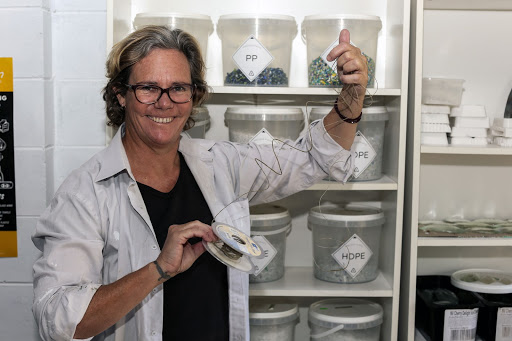
Figure 6. Founder of Plastic Collective, Louise Hardman, with filament from a Plastic Credit project.
Plastic Credits or Pollution Licence
Do Plastic Credits provide brands with a license to continue polluting?
No: However, plastic credits expose businesses to criticism against making operational changes that ensure responsible use of plastics. In this situation, it is very possible that plastic credits could be misused and potentially seen as a licence to continue polluting. In order to avoid taking advantage of plastic credits, it is imperative that brands develop and deliver a credible and achievable Plastic Plan that addresses how a company will reduce, reuse and recycle plastic.

Figure 7. WAW Handplanes’ Plastic Plan led them to develop a line of surfing handplanes from recycled ocean plastics.
How can a credible Plastic Plan help mitigate criticism when using Plastic Credits?
To mitigate this criticism, it’s imperative that plastic credits are used as the option of last resort. Firstly, developing and delivering a credible and achievable Plastic Plan that addresses how a company will reduce, reuse and recycle plastic is consequential.
A credible plan includes the following components:
- Honest acknowledgment of the plastic problem
- A compassionate, credible and measurable end goal based upon Plastic Neutrality and Circularity Principles
- A clear public facing plan with a set of activities to meet the end goal through achievable targets over a sensible period of time
- Activities should progressively address:
- Reduce unnecessary use of plastic
- Replace virgin with recycled plastic where possible
- Reuse plastic from your products in future products where possible
- Encourage consumers to recycle your plastic after consuming your products.
